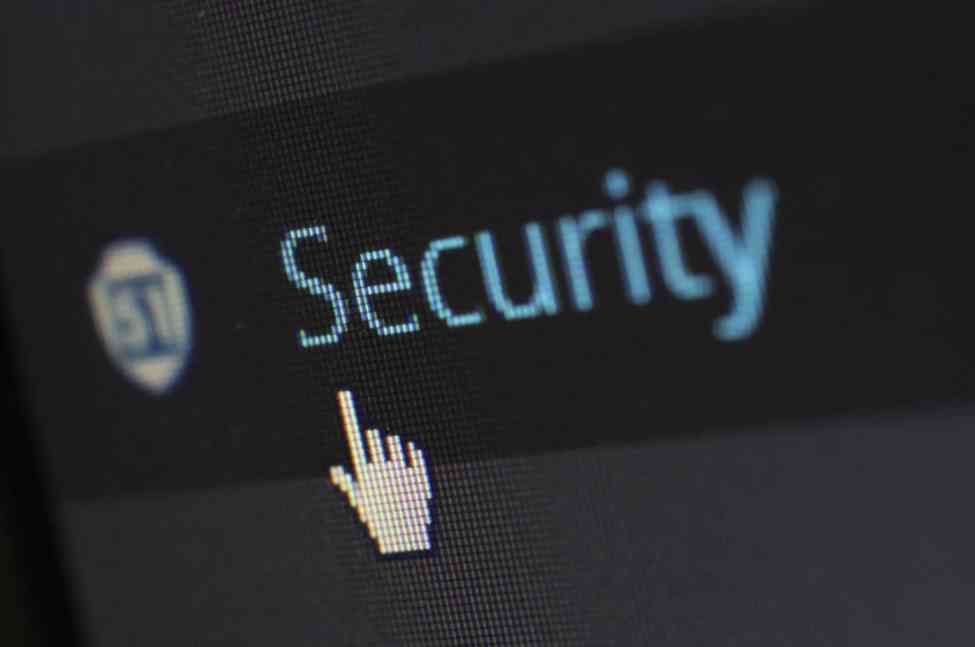Public Wi-Fi has become a necessity for businesses, travelers, and everyday users. From coffee shops and airports to hotels and shopping malls, free Wi-Fi is a valuable amenity that enhances customer experiences and drives engagement. However, public Wi-Fi networks are also a prime target for cybercriminals, posing significant risks to both users and businesses.
Ensuring Wi-Fi security in public spaces is not just a technical challenge—it’s a critical responsibility for businesses that want to protect their customers and maintain trust. This article explores the risks of public Wi-Fi, best practices for securing these networks, and actionable steps businesses can take to safeguard their users and data.
The Risks of Public Wi-Fi
Public Wi-Fi networks are inherently less secure than private ones, making them vulnerable to a variety of cyber threats. Common risks include:
- Man-in-the-Middle (MITM) Attacks: Hackers intercept communication between a user’s device and the Wi-Fi network, stealing sensitive data like passwords and credit card information.
- Malware Distribution: Cybercriminals can inject malware into devices connected to unsecured networks, compromising personal and business data.
- Rogue Hotspots: Fake Wi-Fi networks mimic legitimate ones, tricking users into connecting and exposing their data.
- Data Snooping: Unencrypted networks allow attackers to monitor and capture unsecured data transmissions.
- Session Hijacking: Hackers hijack active sessions to gain unauthorized access to accounts or systems.
Example: A traveler using unsecured airport Wi-Fi unknowingly connects to a rogue hotspot, resulting in stolen login credentials and unauthorized access to their email account.
Public Wi-Fi networks are often unencrypted, meaning that data transmitted over these networks can be easily intercepted by cybercriminals. Man-in-the-middle attacks are particularly common, where hackers position themselves between the user and the network to capture sensitive information. Malware distribution is another significant risk, as attackers can exploit vulnerabilities in unsecured networks to install malicious software on connected devices. Rogue hotspots, which mimic legitimate networks, can trick users into connecting and exposing their data. Data snooping involves monitoring unencrypted data transmissions, while session hijacking allows attackers to take over active sessions, gaining unauthorized access to accounts or systems.
Why Wi-Fi Security Matters for Businesses
For businesses offering public Wi-Fi, security is not just about protecting users—it’s about safeguarding your reputation and avoiding legal liabilities. Key reasons to prioritize Wi-Fi security include:
- Protecting Customer Data: Ensuring the privacy and security of user information builds trust and loyalty.
- Preventing Cyberattacks: Securing your network reduces the risk of breaches that could harm your business.
- Compliance with Regulations: Many industries are subject to data protection laws like GDPR and CCPA, which require businesses to implement security measures.
- Maintaining Brand Reputation: A security breach can damage your brand’s reputation and lead to lost customers.
Protecting customer data is crucial for maintaining trust and loyalty. Customers are more likely to return to businesses that prioritize their safety. Preventing cyberattacks is essential for avoiding the financial and operational impact of a breach. Compliance with data protection laws, such as GDPR and CCPA, is mandatory for businesses that handle personal data, and failure to comply can result in hefty fines. A security breach can severely damage your brand’s reputation, leading to lost customers and negative publicity.

Best Practices for Ensuring Wi-Fi Security in Public Spaces
1. Use Strong Encryption
Encryption is the first line of defense against cyber threats. Ensure your Wi-Fi network uses the latest encryption standards:
- WPA3: The most secure encryption protocol, offering enhanced protection against brute-force attacks.
- WPA2: A widely used standard that provides strong security but is less robust than WPA3.
Avoid: Outdated protocols like WEP (Wired Equivalent Privacy), which are easily compromised.
Example: A café upgrades its Wi-Fi network to WPA3, ensuring that customer data is encrypted and secure.
Encryption scrambles data transmitted over the network, making it unreadable to unauthorized users. WPA3 is the latest and most secure encryption standard, offering enhanced protection against brute-force attacks and other vulnerabilities. WPA2, while still widely used, is less robust and should be upgraded to WPA3 if possible. Outdated protocols like WEP are easily compromised and should be avoided.
2. Implement a Secure Captive Portal
A captive portal is the login page users see before accessing your Wi-Fi. Secure it by:
- Requiring Strong Passwords: Encourage users to create complex passwords.
- Using HTTPS: Ensure the portal uses HTTPS to encrypt data transmissions.
- Limiting Data Collection: Only request essential information to minimize risk.
Example: A hotel uses a secure captive portal that requires guests to enter a unique access code provided at check-in.
A secure captive portal acts as a gateway to your Wi-Fi network, ensuring that only authorized users can access it. Requiring strong passwords and using HTTPS encryption protects user data during the login process. Limiting data collection minimizes the risk of exposing sensitive information.
3. Segment Your Network
Separate your public Wi-Fi network from internal systems to prevent unauthorized access to sensitive data.
- Virtual LANs (VLANs): Create separate VLANs for guests, employees, and IoT devices.
- Firewalls: Use firewalls to restrict traffic between network segments.
Example: A retail store uses VLANs to isolate its guest Wi-Fi from its point-of-sale (POS) system, reducing the risk of a breach.
Network segmentation involves dividing your network into separate segments, each with its own security controls. VLANs create isolated networks for different user groups, such as guests and employees, reducing the risk of unauthorized access. Firewalls restrict traffic between segments, adding an extra layer of protection.
4. Enable Network Monitoring
Monitor your Wi-Fi network for suspicious activity and potential threats.
- Intrusion Detection Systems (IDS): Detect and alert you to unauthorized access attempts.
- Traffic Analysis: Monitor data flows to identify unusual patterns.
Example: An airport uses IDS to detect and block rogue hotspots, protecting travelers from phishing attacks.
Network monitoring involves continuously observing your network for signs of suspicious activity. Intrusion detection systems (IDS) identify and alert you to potential threats, such as unauthorized access attempts. Traffic analysis helps you detect unusual patterns that may indicate a security breach.
5. Educate Users
Provide clear guidelines to help users protect themselves while using public Wi-Fi.
- Avoid Sensitive Transactions: Advise users not to access banking or personal accounts on public networks.
- Use VPNs: Encourage the use of Virtual Private Networks (VPNs) to encrypt internet traffic.
- Verify Network Names: Warn users about the risks of connecting to unverified networks.
Example: A coffee shop displays signage reminding customers to use VPNs and avoid sharing sensitive information over public Wi-Fi.
Educating users about the risks of public Wi-Fi and how to protect themselves is crucial. Advising users to avoid sensitive transactions and use VPNs can significantly reduce the risk of data theft. Verifying network names helps users avoid connecting to rogue hotspots.
6. Regularly Update Firmware and Software
Outdated routers and access points are vulnerable to exploits. Ensure your network equipment is up to date by:
- Installing Updates: Regularly apply firmware updates from manufacturers.
- Patching Vulnerabilities: Address known security flaws promptly.
Example: A hotel IT team schedules monthly updates for its Wi-Fi routers to ensure they are protected against the latest threats.
Regularly updating firmware and software ensures that your network equipment is protected against the latest vulnerabilities. Manufacturers frequently release updates to address security flaws, and applying these updates promptly is essential for maintaining a secure network.
7. Use Multi-Factor Authentication (MFA)
MFA adds an extra layer of security by requiring users to verify their identity through multiple methods.
- SMS Codes: Send a one-time code to the user’s phone.
- Authenticator Apps: Use apps like Google Authenticator for secure verification.
Example: A co-working space requires members to use MFA when accessing its Wi-Fi network, reducing the risk of unauthorized access.
Multi-factor authentication (MFA) requires users to verify their identity through multiple methods, such as a password and a one-time code sent to their phone. This adds an extra layer of security, making it more difficult for attackers to gain unauthorized access.
8. Limit Access with Time and Bandwidth Restrictions
Control how users interact with your Wi-Fi network to minimize risks.
- Session Timeouts: Automatically disconnect users after a set period.
- Bandwidth Limits: Restrict data usage to prevent abuse.
Example: A library sets a 2-hour time limit on its public Wi-Fi, ensuring fair access for all users.
Limiting access with time and bandwidth restrictions helps prevent abuse and ensures fair access for all users. Session timeouts automatically disconnect users after a set period, reducing the risk of prolonged unauthorized access. Bandwidth limits restrict data usage, preventing excessive consumption that could slow down the network.
9. Partner with a Managed Service Provider (MSP)
If managing Wi-Fi security in-house is challenging, consider outsourcing to an MSP.
- Expertise: MSPs specialize in network security and can implement advanced measures.
- 24/7 Monitoring: Continuous monitoring ensures rapid response to threats.
Example: A shopping mall partners with an MSP to manage its Wi-Fi network, ensuring robust security and seamless performance.
Managed service providers (MSPs) specialize in network security and can provide expertise and resources that may be lacking in-house. Continuous monitoring ensures rapid response to threats, while advanced security measures protect your network from vulnerabilities.
10. Conduct Regular Security Audits
Regularly assess your Wi-Fi network for vulnerabilities and compliance with industry standards.
- Penetration Testing: Simulate attacks to identify weaknesses.
- Compliance Checks: Ensure adherence to regulations like GDPR and PCI DSS.
Example: A restaurant chain conducts quarterly security audits to maintain compliance and protect customer data.
Regular security audits involve assessing your network for vulnerabilities and ensuring compliance with industry standards. Penetration testing simulates attacks to identify weaknesses, while compliance checks ensure adherence to regulations like GDPR and PCI DSS.

The Role of Businesses in Wi-Fi Security
Businesses offering public Wi-Fi have a responsibility to protect their users and data. By implementing robust security measures, businesses can:
- Build Trust: Customers are more likely to return to businesses that prioritize their safety.
- Avoid Legal Issues: Compliance with data protection laws reduces the risk of fines and lawsuits.
- Enhance Reputation: A secure Wi-Fi network reflects positively on your brand.
Building trust is essential for customer loyalty, and a secure Wi-Fi network demonstrates your commitment to protecting user data. Compliance with data protection laws avoids legal issues and potential fines. A strong reputation for security enhances your brand’s image and attracts more customers.
The Future of Public Wi-Fi Security
As technology evolves, so do the threats to public Wi-Fi networks. Emerging trends and solutions include:
- AI-Powered Security: Using AI to detect and respond to threats in real time.
- Blockchain-Based Authentication: Enhancing security with decentralized identity verification.
- Zero Trust Architecture: Requiring continuous verification for all users and devices.
AI-powered security uses machine learning to detect and respond to threats in real time, providing advanced protection against cyberattacks. Blockchain-based authentication enhances security by decentralizing identity verification, making it more difficult for attackers to compromise. Zero trust architecture requires continuous verification for all users and devices, ensuring that only authorized access is granted.
Conclusion
Ensuring Wi-Fi security in public spaces is a critical responsibility for businesses that want to protect their customers and maintain trust. By implementing strong encryption, secure captive portals, network segmentation, and other best practices, businesses can mitigate risks and create a safe environment for users.
As cyber threats continue to evolve, staying proactive and informed is essential. Regularly updating your security measures, educating users, and partnering with experts can help you stay ahead of potential risks.
Ready to secure your public Wi-Fi network? Start by assessing your current setup and implementing these best practices to protect your users and data.






